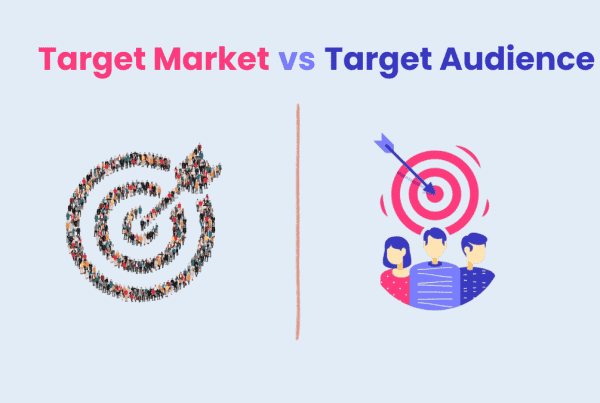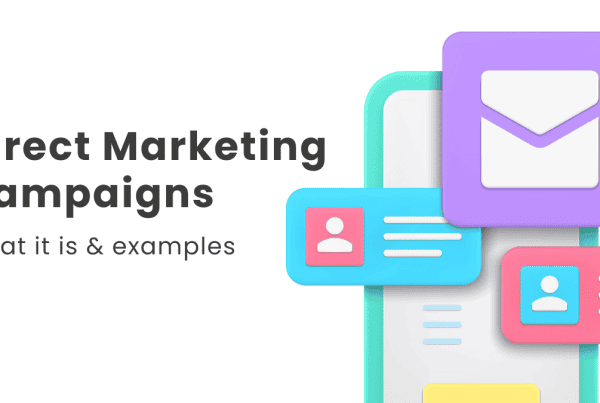
A one-size-fits-all marketing approach often needs to be revised because your audience comprises different types of people with different needs and preferences. How can you ensure your marketing efforts connect with the right people?
The challenge is figuring out your ideal customers, what motivates them to buy, and what messages grab their attention. But here’s the tricky part: what works for one group might not work for another.
Each group of customers has its own set of preferences, past experiences, and behaviors that affect their choices.
In this article, we’ll discuss Multi-Segment Marketing, go over its pros and cons, share some examples, and then learn how to create a Multi-Segment Marketing strategy. Before diving into multi-segment marketing, let’s understand what market segmentation means.
What is multi-segment marketing?
![[your-subject] - EyeUniversal multi-segment marketing](https://www.eyeuniversal.com/wp-content/uploads/2024/12/Multi-segment-marketing-strategy.jpg)
Multi-segment marketing divides a broad market into smaller, distinct groups based on their unique characteristics and requirements, then targets each group with different marketing efforts and messages.
This approach allows businesses to tailor their marketing efforts and messages to fit each segment’s unique needs and preferences. According to a recent report around 81% of consumers prefer a personalized shopping experience.
The company can create personalized marketing messages that speak directly to what each group is looking for, like promoting adjustable dumbbells for young adults, desk pedal exercisers for busy professionals, and gentle resistance bands for seniors.
This way, the company is more likely to attract customers who feel their specific needs are being met, rather than using a general message that might not appeal to anyone.
Multi-segment marketing ensures that consumers only see campaigns they are interested in, leading to more effective marketing.
Multi-Segment Marketing Examples
Let’s take a look at some real-world multi-segment marketing examples:
Coca-Cola
- Segments: Coca-Cola targets different groups with drinks like:
- Coca-Cola Classic for traditional soda drinkers.
- Coca-Cola Zero Sugar is for those who want no sugar.
- Diet Coke for people watching calories.
- Fanta and Sprite are for younger people who prefer fruity flavors.
Coca-Cola creates separate ads for each drink, using different styles and messages to connect with each group.
Nike
- Segments: Nike offers different products for various groups:
- Running Shoes for athletes.
- Jordan Brand for basketball fans.
- Nike Women for women’s sportswear.
- Nike SB for skateboarders.
Nike uses targeted ads and sponsors athletes to promote different products to specific groups.
Marriott Hotels
- Segments: Marriott offers different hotel brands:
- The Ritz-Carlton for luxury travelers.
- Marriott Hotels for business and leisure travelers.
- Courtyard by Marriott is for business people who need affordable stays.
- Moxy Hotels is for young travelers looking for trendy, cheap options.
Marriott creates ads for each brand that speaks to the needs of different customers, such as luxury for The Ritz-Carlton and affordability for Courtyard by Marriott.
Samsung
- Segments: Samsung targets various groups with products like:
- The Galaxy S Series is for people who want top-tier smartphones.
- Galaxy A Series is for people looking for affordable phones.
- Galaxy Z Fold is for those wanting innovative foldable phones.
- Samsung Smart TVs for tech lovers.
Samsung tailors its ads for each product, focusing on premium features for high-end phones and budget options for affordable models.
Toyota
- Segments: Toyota makes different cars for various customers:
- Prius for eco-conscious drivers.
- Camry for families.
- Tacoma and Hilux for truck lovers and outdoor enthusiasts.
- Lexus is for high-end buyers looking for luxury cars.
Toyota promotes each car model differently, focusing on fuel efficiency for the Prius and strength for its trucks.
These examples show how brands use multi-segment marketing to reach various customers, offering them what they want and growing their businesses.
Pros and Cons of Multi-Segment Marketing
Here are the pros and cons of multi-segment marketing:
Pros of Multi-Segment Marketing
- Better Targeting: Allows businesses to divide their audience into smaller groups and create marketing strategies that suit each group.
- Wider Customer Reach: Helps companies expand into different markets instead of relying on just one.
- Reduces Risk: If one market slows down, other markets can keep the business going.
- Stay Competitive: Targeting multiple groups helps businesses stand out and stay stable in the market.
Cons of Multi-Segment Marketing
- Brand Confusion: Trying to appeal to too many groups can make the brand lose its original identity (e.g., a luxury brand offering budget products might upset its premium customers).
- High Effort: Managing different strategies for each group takes a lot of time, money, and effort.
- Difficult to Manage: Without enough resources, running campaigns for many groups might lead to poor results.
How to Craft a Multi-Segment Marketing Strategy?
Here’s a step-by-step guide to crafting an effective multi-segment marketing strategy:
Step 1: Understand Your Audience
![[your-subject] - EyeUniversal Understand Your Audience](https://www.eyeuniversal.com/wp-content/uploads/2024/12/Understand-Your-Audience.jpg)
Before you can divide your audience into segments, you need to know who your overall target customers are. Start by researching your industry and competitors to learn about your audience’s age, interests, and habits (both offline and online).
For example, if you sell eco-friendly skincare products, look at brands like Burt’s Bees to see what kind of people buy from them. This will help you understand who might be interested in your products too.
Step 2: Divide Your Audience into Groups
![[your-subject] - EyeUniversal Audience Segmentation](https://www.eyeuniversal.com/wp-content/uploads/2024/12/Audience-Segmentation.jpg)
Once you understand your general audience, break it down into smaller groups (segments) based on things we found in the previous step.
For example, if you sell fitness equipment, you could have segments like:
- Home Workout Fans: People who need compact equipment for small spaces.
- Gym Owners: Looking for heavy-duty machines for their gyms.
- Professional Athletes: Seeking advanced, high-performance gear.
Create profiles (buyer personas) for each group. These personas help you understand your customers better, like “John, a 30-year-old gym owner looking to expand his studio with durable equipment.”
Step 3: Set Clear Goals for Each Group
![[your-subject] - EyeUniversal Smart Goals](https://www.eyeuniversal.com/wp-content/uploads/2024/12/Smart-Goals.png)
Each segment will have different needs, so set specific goals for each one. For example, if you want to attract young professionals with eco-friendly office supplies, your goal could be to boost sales by 25% in three months using social media ads.
For college students, your goal might be to build loyalty through special discounts and engaging content on TikTok or Instagram. Setting clear goals helps you track success and adjust as needed.
Step 4: Customize Your Marketing Mix
![[your-subject] - EyeUniversal marketing mix](https://www.eyeuniversal.com/wp-content/uploads/2024/12/marketing-mix.png)
Your marketing approach (product, price, place, and promotion) should be tailored for each group:
- Product: If you sell eco-friendly cleaning products, offer bundles with different pricing for families who want to save, and single-use options for young adults who want zero-waste packaging.
- Pricing: Adjust your prices based on the segment. Offer premium pricing for high-quality organic products and discounts for students or bulk buyers.
- Promotion: Use Instagram Stories for younger audiences to show product tips, while using email newsletters for older customers to share testimonials and benefits.
- Place: Sell basic pet products on Amazon for convenience and premium lines in specialty pet stores to attract luxury buyers.
Step 5: Launch Campaigns for Each Segment
Create a content calendar to plan your campaigns, deciding when and where they’ll run. For example, target eco-conscious consumers with educational posts on LinkedIn and attract budget shoppers with discounts on Facebook.
You can also use Instagram influencers to reach trendy millennials while offering educational videos on YouTube for professionals interested in your high-end tech gadgets.
Step 6: Track Your Results and Refine the Strategy
Use tools like Google Analytics or Facebook Insights to monitor how your campaigns are doing. Track metrics like engagement, website traffic, and sales for each segment.
For instance, if you notice Gen Z customers are more active on social media in the evenings, adjust your posts to match their schedule. You can also use tools like heatmaps to see how customers interact with your website and improve the user experience.
Finally, keep analyzing your data and adjust your strategy based on what works best. For example, if you find that families love watching your video content, invest more in creating engaging videos.
You might also discover that certain products are a hit with specific segments. If your reusable coffee cups are popular with urban professionals, consider adding more designs and colors to attract them further.
That’s exactly how you can build a multi-segment marketing strategy that helps you reach more customers and build stronger connections with them.
The Future and Importance of Multi-Segment Marketing
In today’s diverse market, a one-size-fits-all approach no longer works. Multi-segment marketing allows businesses to reach different audience groups with tailored messages, products, and strategies, building stronger customer connections.
As consumer behaviors shift, multi-segment marketing will be key for staying competitive. Future advancements in data analytics will make it easier to understand and target these segments effectively. By investing in this approach, businesses can boost brand loyalty, drive growth, and ensure long-term success in an ever-changing market.
FAQs
What is the difference between multichannel marketing and multi-segment marketing?
Multichannel marketing uses multiple platforms (like social media, email, and websites) to reach customers, focusing on delivering a consistent message across various channels. In contrast, multi-segment marketing targets different customer groups within a market by tailoring messages and strategies to fit each segment’s unique needs and preferences.
What factors are considered when dividing a target audience?
Market segmentation involves dividing your broad target audience into smaller, more manageable groups based on factors like demographics (age, gender, income), geographics (location, climate), psychographics (lifestyle, values), behavioral traits (purchase habits, loyalty), and specific needs (e.g., gluten-free products).
What are the 4 marketing segments?
The four main marketing segments are:
- Demographic Segmentation – Groups people by age, gender, income, etc. (e.g., targeting high-income buyers for luxury cars).
- Geographic Segmentation – Focuses on location, like regions or climates (e.g., winter clothes for cold areas).
- Psychographic Segmentation – Based on lifestyle, values, or interests (e.g., fitness products for health-conscious people).
- Behavioral Segmentation – Looks at buying habits and brand loyalty (e.g., discounts for regular customers).
These help businesses target their audience better.



